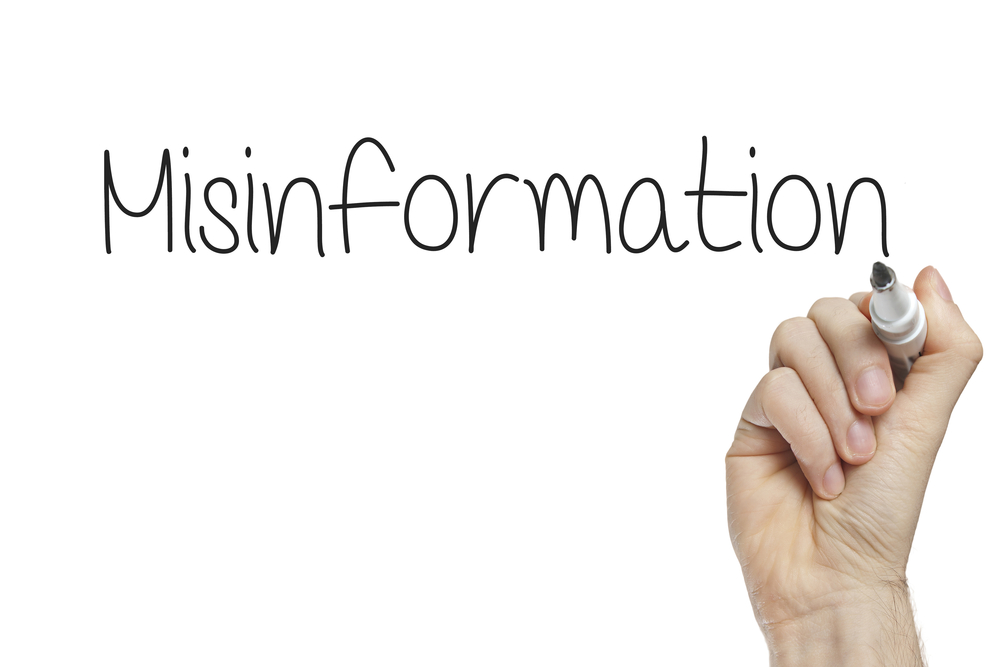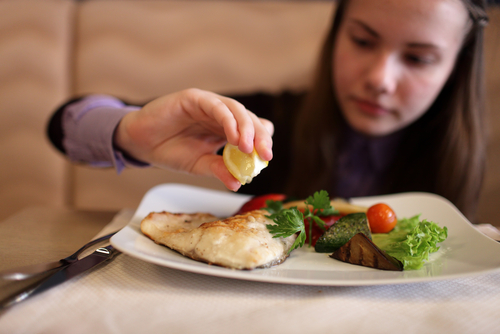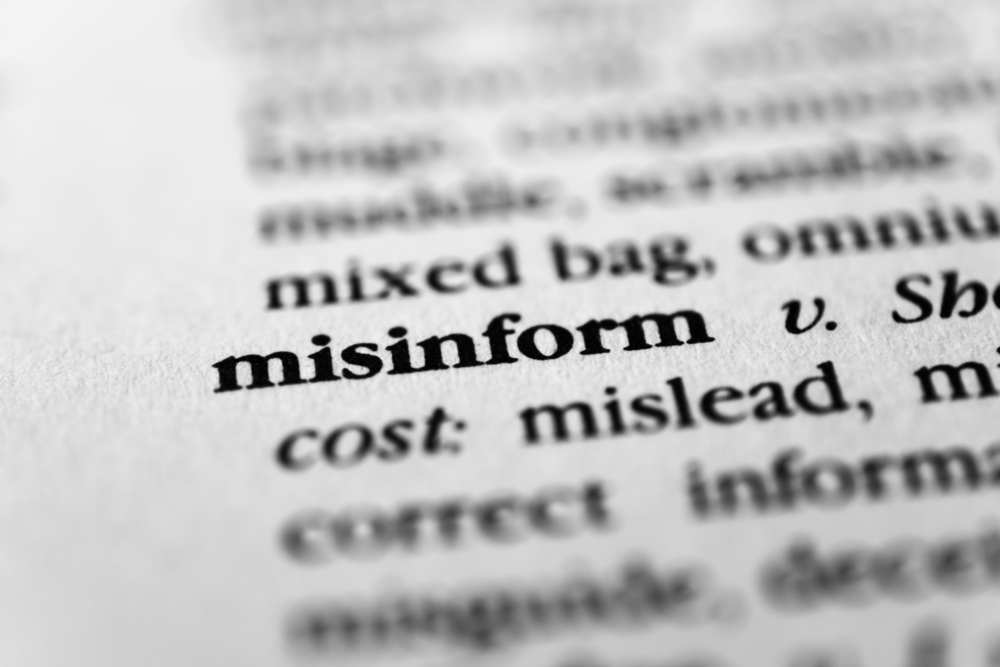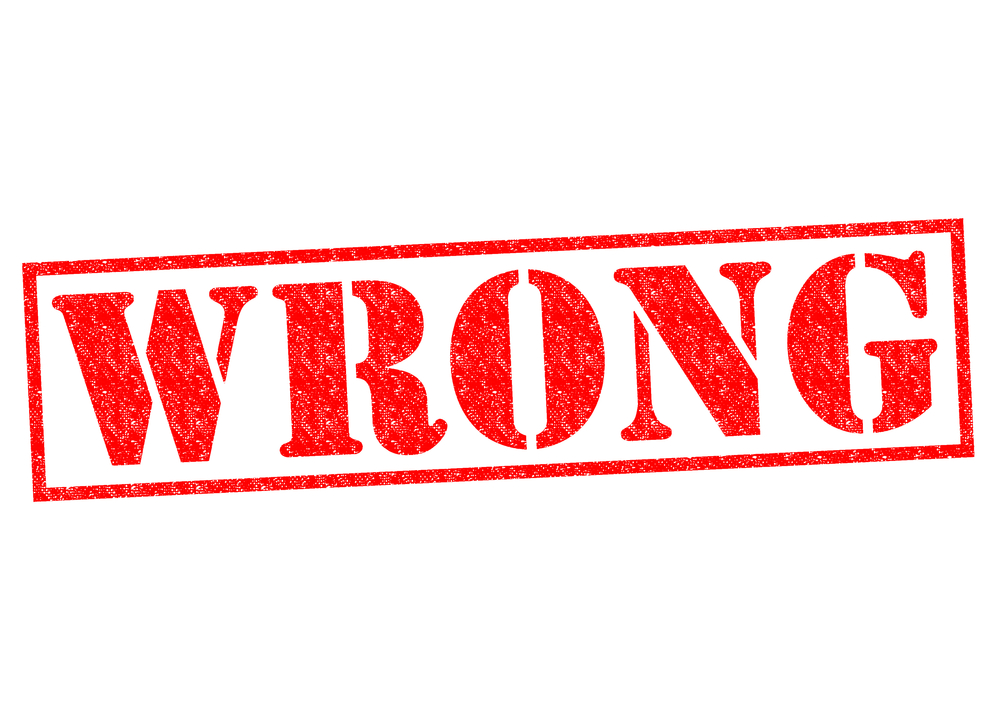All posts by NFI Media
UPDATE: How San Diego Magazine Handles Errors
UPDATE: 08.25.17
- Despite the fact that the reporter responsible for the story originally told us unequivocally that he would not be issuing a correction of any kind, the newly-edited story now begins with this sentence: “Update and Correction: The post has been updated to reflect that Federal law mandates that no bycatch (dolphins, turtles, and sharks) makes it into canned tuna from US companies.” That, along with various copy edits throughout the text illustrates the commitment to accuracy shown by San Deigo Magazine’s Editor-in -Chief Erin Meanley Glenny. At the same time this cautionary tale stands as an example to journalists reporting on seafood; it’s easier to do your research before you publish.
ORIGINAL: 08.24.17
San Diego Magazine ran a highly flawed piece on sustainability and tuna industry practices [Yes We Canned. Catalina Offshore gets into the growing local, sustainable canned tuna game by Troy Johnson, 8/17] that from its headline onward is full of bias and errors. You see, the original headline was the hyperbolic “Canned Tuna Sucks!” Among its many misleading claims, the worst was the absurd suggestion that major American tuna brands are canning things like turtle along with tuna. They are not.
Contacting the editor-in-chief
We contacted the magazine’s editor-in-chief, Erin Meanley Glenny, asking for corrections to this and other errors of omission, in the letter found below this post.
And even though we plainly explained Johnson’s basic misunderstanding of the concept of bycatch, and linked to substantiation on matters of empirical fact, Glenny failed to address the substance. Instead, she forwarded the letter to the offending author, tasking him with a response.
Unproductive email exchanges
But in a series of increasingly unproductive email exchanges with Johnson, he repeatedly refused to correct his mistakes, and instead suggested we participate in a “conference call” to debate three “sustainability experts,” whom Johnson assured us backed up the faulty assertions in his story.
While we welcome open, honest dialogue with other stakeholders in the seafood sustainability conversation, and were initially open to talking with Johnson’s sources as part of the process of correcting the magazine story, it quickly became apparent from interacting with him that his suggestion was a simple deflection.
Johnson cannot really believe that an offer to “debate” three mystery sources—without any knowledge of their credentials, biases, or even identities—is a sufficient response to a story that misled readers.
Actual Experts
Similarly, there already is a dedicated, robust, and transparent public forum for Johnson’s mystery “experts” to debate tuna sustainability with scientists, fishery managers, and other stakeholders. It’s called the International Seafood Sustainability Foundation (ISSF). A group Johnson never contacted before he wrote his story. If Johnson is relying on Greenpeace expertise, as the many links to Greenpeace publications in his piece suggest, we won’t hold our breath. As we made clear in the letter, Greenpeace has refused invitations to participate in that forum for years.
Distortions Remain
After all this, the distortions in the story remain.
First, the scientifically baseless claim that canned tuna contains turtle. We provided Johnson with independent, peer-reviewed research and data on bycatch, both to help him correct his misunderstanding of the dictionary definition of the term, and to illustrate that the reality in these fisheries is different from the alarmist picture he paints. Bycatch is simply not canned with tuna, and the FDA imposes rigorous identity standards on everything canned, processed, and sold. Bycatch does not ever enter the processing supply chain.
Second, the fishing methods Johnson seems to dislike have been found by independent, peer-reviewed scientific studies to have bycatch rates similar to, or less than, the methods he seems to prefer. Moreover, the pole and line method has recently been found by a landmark University of California study to be three to four times more carbon intensive than the modern fishing methods he appears to oppose. Despite being confronted with these facts, Johnson has decided to keep them from his readers.
Third, 76 percent of all tuna comes from stocks considered healthy. In fact “renowned tuna fisheries scientist” Alain Fonteneau of the French Research Institute for Development (IRP) recently declared global tuna stocks “very robust” and “very difficult to heavily overfish,” concluding that none of the world’s 21 major tuna stocks have shown signs of critical collapse.
Correct the Record
None of these facts are going to become any less true, no matter how many folks Johnson patches into the conference line. It would appear that it’s up to his editors at this point as to whether they want to correct the record.
The Letter to Erin Meanley Glenny
August 18, 2017
Dear Mrs. Meanley Glenny,
In the course of what appears to be an advertisement for a local canned tuna producer [“Canned Tuna Sucks! But Catalina Offshore’s new local, sustainable tuna doesn’t,” 8/17], gameshow judge Troy Johnson repeats a number of baseless and misleading claims made by Greenpeace activists. Worst of all, he seems to completely misunderstand the concept of bycatch, drawing conclusions regarding American canned tuna that are wholly without basis in fact. They demand immediate correction.
Specifically, Johnson garishly claims in several places that canned tuna from major U.S. brands contains shark, turtle, and other marine animals. That’s either a malicious and actionable untruth, or the result of a profound ignorance of the concept of bycatch—which refers to fish other than the targeted species caught, not processed and canned. In either case, you’re obliged to correct the record for your readers.
Nor is Johnson on much firmer ground in relying on Greenpeace’s unscientific “rankings” of major US canned tuna producers as the basis for his criticism. Those rankings are largely ignored by the press, retailers, and consumers alike, as they are based on an ever-shifting set of opaque criteria designed by an organization that refuses to reveal its methodology.
In fact, Greenpeace is a uniquely poor source for sound information on sustainable tuna fishing, including bycatch. The fishing methods they oppose have been found by peer-reviewed scientific studies to have bycatch rates similar to, or less than, the methods they prefer. What’s more, a landmark University of California study just concluded that the pole and line methods Greenpeace and Johnson advocate for are actually extremely carbon intensive, and consume approximately three to four times more fuel than boats using more efficient, modern methods. The author is thus recommending fishing practices that encourage pollution, to avoid a problem that doesn’t exist, having to do with a phenomenon he doesn’t seem to understand.
What your readers should know is that top ocean sustainability experts agree that global tuna stocks are far healthier than suggested in your pages. Indeed, while groups like Greenpeace have been busy pushing disinformation, the tuna industry has worked proactively with scientific organizations like the International Seafood Sustainability Foundation (ISSF) to ensure that efforts to meet global tuna demand are environmentally responsible. Greenpeace has refused to sit down with ISSF as part of this ongoing dialogue, despite an open invitation to do so that stretches back years.
This lack of critical context in and of itself suggests the story is in need of correction and amendment. But, again, the much more fundamental error at the center of the author’s understanding of bycatch is simply too egregious to let stand.
We await your speedy action and thank you.
Sincerely,
Brandon Phillips
Sr. Director Communications & Advocacy
National Fisheries Institute
Eating Fish Vital: Washington Post
The Washington Post takes a break from reporting on the political storm du jour to highlight the importance of eating fish in today’s article titled “Fatty acids lower your risk of heart disease. Without fish, you’re missing out.”
The write up is focused on the benefits of Omega 3’s and the messages delivered are unmistakable:
Americans aren’t eating fish often enough
“Most Americans aren’t getting enough EPA and DHA. That’s of concern because there is strong evidence that these omega-3s reduce triglyceride levels to help lower the risk for heart disease or heart attack.”
Pregnant Woman need to eat more fish
“Eating enough fish for health benefits while also keeping mercury levels at bay can seem like a challenge. It’s not.” “If you’re pregnant, the Food and Drug Administration recommends getting up to 12 ounces per week of low-mercury fish and shellfish such as shrimp (which is way below the amount most people are eating).”
The Facts Are Out There
“All things considered, the substantial health benefits of eating fish far outweigh any potential risks.”
Please Pass The Fish
The Washington Post cuts to the chase in this article that’s worth a read. And with so much nutrition misinformation out there this one’s worth a share as well.
Reporters: You Can’t Put a Price On Accuracy… Actually Maybe You Can
The price of accuracy in food reporting is a minimum of $177 million. ABC News’ parent company Disney is cutting a check to Beef Products Inc. for at least $177 million because its reporters chose hyperbole and embellishment over accuracy in their reporting. ABC called it an “amicable” settlement because if it had gone to the jury the network would have been on the hook for $1.9 billion. Let’s revisit the definition of amicable.
- am·i·ca·ble: adjective (of relations between people) having a spirit of friendliness; without serious disagreement or rancor.
Sure. Almost $200 million dollars’ worth of newsroom mistakes later ABC and Beef Products Inc. are collaborating in the spirit of friendliness, without serious disagreement or rancor.
This case is a stark reminder to reporters. You can put a price on accuracy.
Reporting On Tuna Study Fails Readers
Not a Health Study
When the LA Times and San Diego Union Tribune recently reported on a tuna study about contaminants in fish they both made a major mistake in their reporting… or, really, in what they didn’t report. Neither of their identical stories highlighted the fact that the research they were writing about was not nutrition research. The study was essentially an algebraic application – it did not study the health impact of eating tuna.
Statistical Gymnastics
The papers reported, almost breathlessly, about “toxins in tuna” and mused about “how safe it is to eat.” But didn’t mention that the research never looked at that. It is not the type of study that would effectively formulate actual nutrition advice. Generally, researchers look at the health effects foods have on real people and use that information to formulate advice. That’s not what this study did… at all. In fact, one part of the study suggested it found “calculated meal recommendations” of between 787 meals and 3 meals per month. That’s not nutrition science that’s statistical gymnastics. It’s akin to saying motorists could prevent auto accidents by traveling between 5mph and 65mph. Beyond unhelpful, it’s almost nonsensical.
Blatant Lack of Perspective
What may be worse is the complete lack of perspective on the issue of contaminants, known as PCB’s, in the article. The absence of accurate, actionable reporting could mislead readers and drive them away from a healthy protein. Harvard University research finds seafood broadly makes up only 9% of the PCBs in the average American diet, while products like vegetables make up 20%. No doctor is commissioning studies to find out how we can encourage Americans to eat fewer vegetables. So why are the LA Times and San Diego Union Tribune not reporting on this important nuance? It’s a simple fact and when it’s not included it begs the question; why was it left out? Similarly, editorial questions should be raised when the second paragraph of a story notes that researchers were tracking concentrations of “toxins in tuna” and “how safe it is to eat” but the author waits a full 447 words to reveal, “most of the tuna analyzed in the study would be considered safe.”
Hyperbole Rules the Day
Hyperbole, bordering on click-bait, apparently rules the day. It would appear that a statistical evaluation of contaminants found in fish that ultimately didn’t cause any sort of acute illness among consumers doesn’t attract readers like a headline that screams, “How safe is your tuna?”
L.A. Times adds Sensationalism to Tuna Study Reporting
That the author failed to properly investigate this matter is disappointing, but she’s not alone in her malfeasance. The piece originally appeared in the San Diego Union Tribune, with a far more innocuous title- “Toxin levels in tuna depend on where it’s caught.” That the Los Angeles Times saw fit to publish this piece is bad enough. That they exercised their editorial discretion to make it more hyperbolic and sensational is unacceptable.
Context free reporting like this is not without consequence. Despite extensive scientific literature on the importance of incorporating seafood into a healthy diet, only 1 in 10 Americans are consuming enough seafood, which contributes to a public health crisis. Another Harvard study found that insufficient seafood consumption contributed to 84,000 preventable deaths. Irresponsible, misleading reports bearing sensationalist headlines like this only discourage regular seafood consumption, to our great national detriment.
Michael Pellman Rowland is Not Here to Help You Learn More About Seafood
Michael Pellman Rowland is not here to help you learn more about seafood. He’s here to turn you off of seafood and on to a vegan diet. While he doesn’t describe himself as vegan very often in print his wife’s website certainly does. He’s focused on “reducing suffering” felt by fish and goes about that mission by claiming there will be no fish left in the oceans in the next fifty years, due to commercial fishing. A claim he backs up with links to thoroughly discredited 11-year-old articles.
Reporters looking for real resources on seafood should contact the National Fisheries Institute. We would be happy to provide you with myriad independent, science-based resources who are not disingenuous activists purposely pedaling misinformation.
Reporting on Reporters: Time Magazine
Time Magazine is one of the most honored and celebrated news publications on newsstands today. And that may be part of its problem, no one gets their news from newsstands anymore. Despite its history of award winning journalism, the publication displays a shockingly outdated model when it comes to reporting on seafood.
Time Magazine Reporters Pigeonhole Seafood Coverage
Here are the categories Time reporters appear to be directed to use in order to pigeonhole its seafood coverage; Farmed vs. Wild, emptying the oceans, environmental hyperbole, ambiguous health issues. If they’re writing on seafood it seems the report must fit in one of those categories or it doesn’t get any ink. Lazy, outdated and marginalizing might describe this editorial strategy.
A Pattern Persists
This is not simply a vague observation, it’s a well-documented pattern that has persisted for years. When you’re not spending copious amounts of your time at the newsstand, you can read through some examples for yourself here, here, here and here.
Digital Distortion?
In its latest, not particularly interesting, retread of a story about how salmon gets its color Time produces an accompanying video. Hats off to them for straying from the print model a mere 12 years after YouTube went live.
In the video Time leans on its old editorial crutches by starting off reporting that (0:38) “…wild salmon is better than farmed says Dr. David Katz.”
Really Time?
- A United States Department of Agriculture (USDA) study published in theJournal of the Academy of Nutrition and Dietetics “… showed that consuming farm-raised salmon was an excellent way to increase omega-3 fatty acids in the blood to levels that corresponded to reduced heart disease risk”
Then Time transitions into a nebulous health issue noting that, (0:48) “…farmed salmon might not provide as many omega 3’s.” Perhaps we should ask Harvard medical school if that’s accurate?
- “…farm-raised salmon tend to have more total fat — and therefore more omega-3 fat — than wild ones. Bottom line: Don’t stress too much about your salmon selection.”
Time Magazine Lapped
Time also notes (0:54) that omega-3 content in farmed fish is lower than it used to be but are still, “ten to 100 fold higher than most other food groups.”
Wait, what? This is the salient point Time choses to highlight in its reporting, that the omega-3’s are lower these days but are still 100 times higher than in other foods? That’s like saying Usain Bolt is slower these days… but he’s still 100 times faster than anyone who works at Time magazine. News? Not quite.
Farmed and wild salmon complement each other. Both are safe and delicious. And seafood is the healthiest animal protein on the planet. Perhaps Time will one day abandon its outdated editorial tactics and embrace the actual seafood narrative that published, peer-reviewed science has.
Eat This Not That Has Finally Lost All Credibility
Once sort of an interesting site with a quirky take on a few nutrition axioms, Eat This Not That has evolved into a click-bait machine with zero nutritional credibility. Its latest foray into nonsense peddling involves editors apparently telling writer Sarah Crow to find 75 “healthy foods” and do anything you can to them to ensure you’re able to report that they are not healthy.
Wait. What?
Crow reports that Prepared Salmon is unhealthy because it “is regularly coated in toppings that have no place in a healthy meal.” Wait. What? “Toppings” make an incredibly and inherently healthy protein like Salmon an unhealthy food according to Eat This Not That?
Ummmmm… doesn’t that make the toppings unhealthy, not the salmon?
Better avoid those potatoes
That’s like saying baked potatoes are dangerous and potentially deadly… when coated with cyanide. Oh, yeah. Better avoid those potatoes.
Eat This Not That Standards
Come on Eat This Not That you’ve got to have some editorial standards… don’t you?
I guess not.
Mercury in Fish: The Washington Post Recycles Bad Seafood Advice
In a reprinted piece presented as advice to confused consumers looking for healthy seafood options, (“Eat more seafood for your health, right? Actually, it’s not that simple”, May 20) Keri Szejda in fact parrots some of the most common misconceptions about omega 3’s, mercury in fish, and sustainability leaving readers more confused than informed. Let’s examine some of her claims.
Omega 3 fatty acids an essential part of a healthy diet
On omega 3 variability from fish to fish: Szejda correctly notes that omega 3 fatty acids are an essential part of a healthy diet, but her summary dismissal of tuna (“an ok source, but it’s a mixed bag”) is at odds with the conclusions of groups like the American Heart Association. It also ignores other factors salient to real Americans trying to make good choices in the supermarket, including canned tuna’s widespread availability, versatility, and affordability versus other options.
Mercury in fish doesn’t have to be scary
On government advice about mercury in fish consumption: Szejda’s recap of the details around FDA advice on seafood consumption fails to provide readers with the most important piece of big-picture context: there has never been a case of mercury poisoning as the result of the normal consumption of commercial seafood found in any peer-reviewed medical journal in the U.S. The scientific consensus points towards overwhelming evidence that increasing the amount of fish Americans eat would lead to better overall health.
The sin of Omission
Szejda’s omission here is not harmless, and misleads readers in potentially serious ways. A long-term study showed that children whose mothers had reduced their seafood intake during pregnancy had appreciably lower IQs. Those children missed out on key nutrients like Omega-3 fatty acids – which every major health organization says are essential for healthy brain development.
Sustainable tuna
On fishing methods and sustainable tuna: Departing from the scientific consensus, Szejda parrots the claims of irresponsible activists, which have no basis in empirical reality. The truth is that the fishing methods preferred by these groups would require vastly more fishing vessels emitting far more carbon to meet current global demand for tuna. And that’s according to an independent study from researchers at the University of California. Not only are these methods environmentally unsound, they’re economically inefficient, and would likely lead to dramatic price increases in a seafood staple for millions of Americans.
Unnecessarily complicating a critical public health mission
Szejda may have undertaken this piece with the best of intentions, but it nevertheless does a disservice to the readers she’s trying to help, and further complicates the critical public health mission; stemming the dangerous decline in Americans’ seafood consumption, which peer-reviewed research shows is contributing to tens of thousands of preventable deaths each year.
Another Greenpeace Stunt Falls Flat
Greenpeace is once again using a half-baked ploy to mislead the public and entice credulous reporters into providing it with free publicity. In a carbon copy of previous failed efforts, the group has released a manufactured list that purports to rank various canned tuna brands. But the list gets basic facts flat wrong, and relies on an utterly unverifiable and subjective methodology that is concealed from the public.
Facts & Figures or Vague Generalities
How many companies participated in the survey? Greenpeace doesn’t say. How was information compiled for companies that declined to participate, and from which sources? Greenpeace is silent. What were the specific criteria used in the ranking, and what percentage of the score did each comprise? Greenpeace offers only vague generalities.
A Seat at the Big Kids Table
What we do know is that Greenpeace gets many of the empirical specifics wrong. To cite just one of the more glaring examples, they deceptively rely on a paper—written by their own oceans campaign director—to call out major US tuna brands for the practice of transshipment. But that sole source is at odds with the conclusions of the International Seafood Sustainability Foundation (ISSF), a globally recognized consortium of scientists and fisheries experts. ISSF made transshipments a priority, and member companies committed to comply with ISSF conservation measure 4.4a on transshipments back in 2011, committing not to work with purse seine vessels engaging in transshipments at sea, with minimal exceptions. In their most recent audit, ISSF concluded that 25 of 25 companies were fully compliant with the measure.
Greenpeace might know this if they accepted the now 2,000-day-old standing invitation to participate in grownup conversations about tuna fisheries and sustainability with ISSF. Or if they simply did their research.
More Harm Than Good
Also ignored in the baseless ranking is the mounting evidence that groups like Greenpeace are themselves a threat to seafood sustainability. For years, they claimed that FADs (Fish Aggregating Devices) were bad for the environment. Yet recent studies show the opposite – that using Greenpeace’s preferred fishing methods leads to higher carbon emissions. Yet instead of taking a hard look in the mirror, Greenpeace is recycling the same tired and discredited attacks it has peddled for years.
Fundraising Again
 And to what end? Fundraising, for one, as is Greenpeace’s compulsive habit. And this time they’re soliciting not just money, but personal data, for unspecified future use.
And to what end? Fundraising, for one, as is Greenpeace’s compulsive habit. And this time they’re soliciting not just money, but personal data, for unspecified future use.
In the midst of turnover and turmoil among senior leadership, a cascade of international incidents on multiple continents, and an active racketeering lawsuit, Greenpeace is understandably looking to redirect the public’s attention from itself with another pseudo-scientific “report.” But early indications suggest that the trend of diminishing returns for the group’s fact-free stunts is continuing. The public is getting wise to Greenpeace’s playbook, and the press would do well to follow suit.
New York Times: nutrition experts “agree on the value of fish”
A new report in the New York Times takes a look at whether supplementing baby formula with the omega-3 fatty acid DHA (found in fish) actually boosts baby brain health. The findings, regarding supplementation, and the reporting are essentially inconclusive. But the results regarding whole fish and its dietary prowess are not left unsettled:
- And while experts may disagree on the value of DHA supplements, they seem to agree on the value of fish. “Fish has a lot of different nutrients besides DHA that are probably very good. A lot of iodine comes from fish, selenium comes from fish, and these are all key brain nutrients,” said Dr. Carlson. “The best thing you can do is eat a balanced, healthy diet, and part of a balanced healthy diet is to eat fish twice a week. And then, when you introduce food to your child, to include some fish in their diet,” Dr. Simmer said.










